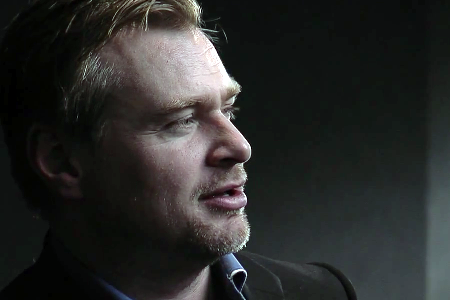CHRISTOPHER NOLAN Spits On Hating 3D, Explains His Shooting Philosophy
Christopher Nolan is the jam. Revived Batman, blew minds with Inception, and gave Warner Bros. the finger when it came to shooting in 3D.
Play List:
Christopher Nolan — you know him as the well-dressed and refined, scarf-wearing filmmaker of Batman films like “The Dark Knight Rises” — recently sat down the the Director’s Guild Of America (DGA) for alengthy chat about, well, almost every aspect of filmmaking. You literally need to print this one out, pull down the blinds and shut everything out to fully give this one your undivided attention, so we did the wise thing and broke it down into five highlights for you.
1. Jeffrey Robinov and the suits at the studio would have loved “The Dark Knight Rises” to take in those extra 3D dollars.
“Warner Bros. would have been very happy, but I said to the guys there that I wanted it to be stylistically consistent with the first two films and we were really going to push the IMAX thing to create a very high-quality image. I find stereoscopic imaging too small scale and intimate in its effect. 3-D is a misnomer. Filmsare 3-D.” So there.
2. Nolan’s never had to do reshoots on any of his films ever.
“It all comes down to editing, just craft, just hammering it with my editor every day, trying radical cuts, pulling things out, abandoning bits of exposition, saying, ‘OK, does the audience really need to understand this? What if they don’t?’ I always overwrite the exposition in my scripts so that I’ve got multiple ways to get a point across. If you tell the audience something three times they won’t understand it, but if you tell them only once, they will. It’s an odd thing. So a lot of cutting for time is, for me, cutting for clarity. It’s finding where you can just pull dialogue out that you have overwritten, so you can find that one simple way an audience can get the right point.”3. Budding filmmakers of the world. If you want to study or learn the key elements of Nolan’s filmmaking: it’s all about the POV
“Whether in the pure camera blocking or even the writing, it’s all about point of view. I can’t cut a scene if I haven’t already figured out whose point of view I’m looking at, and I can’t shoot the scene in a neutral way. I’ve tried to use more objective camera techniques–a longer lens, flattening things out, using multi-camera–but they don’t work. It’s funny, you were asking about 3-D and one of the things that happened when the craze came back was various aspects of conversion. The way I shoot film is actually very conducive to converting to 3-D because I’m always thinking of the camera as a participant. I don’t use zoom lenses, for example, so I don’t reframe using the zoom. Instead, we always move the camera physically closer and put a different focal length on. Stylistically, something that runs through my films is the shot that walks into a room behind a character, because to me, that takes me inside the way that the character enters. I think those point-of-view issues are very important.”
[Read More]
This dude, man. This dude.




